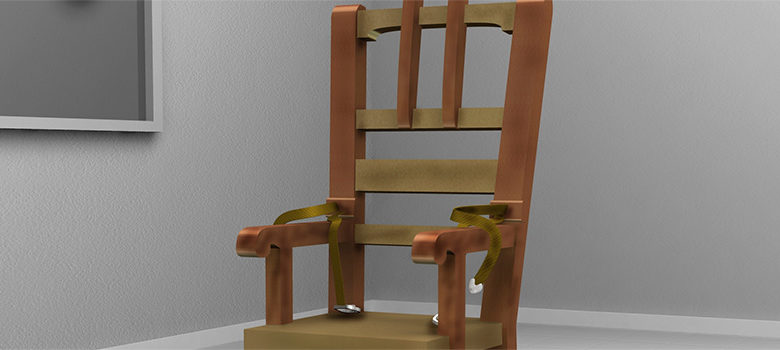
Just a over a month ago, on 29 June 2015, the Supreme Court of the United States ruled as constitutional, in Glossip v. Gross, the use of a particular controversial chemical for lethal injection in criminal executions. The roots of this case go back to enlightened founders of the republic who insisted on ratifying the U.S. Constitution only with the addition of a “Bill of Rights”-10 amendments guaranteeing certain civil rights for citizens. Amendment VIII, with precedence in English common law, states: “Excessive bail shall not be required, nor excessive fines imposed, nor cruel and unusual punishments inflicted.” As with much of the language of the constitution, the exact meaning and application of that last phrase has been debated by politicians, jurists and the public almost since its adoption. There is, of course, the great existential question of whether capital punishment itself is unconstitutionally “cruel (as Justices Stephen Breyer and Ruth Bader Ginsburg implied in a sweeping second dissent in Glossip). Putting that aside, Americans have never been able to agree on-if it is necessary to execute an individual for the sake of the greater society-what is the “best” and least cruel way to do so.
It is therefore worth noting that this month marks a macabre anniversary that brings together the debate over cruel and unusual punishment with the topic of our columns-the history of electrical engineering. One hundred and twenty-five years ago, on 6 August 1890, the first person to die in an electric chair, William Kemmler, was executed at Auburn Penitentiary in upstate New York.
By the early 1880s, Americans were increasingly unhappy with hanging as a legitimate means of execution, and New York State established a commission to explore the issue. By an interesting turn of fate, the 1880s were also the period of the “War of the Currents,” when Edison and his direct current system battled George Westinghouse’s alternating current system (based on Nikola Tesla’s induction motor) to become the standard for a growing power industry. One of Edison’s tactics was to highlight the danger of AC as compared to DC. Edison employees, including Harold P. Brown-a crusader against AC on health grounds-and Arthur Kennelly (a future president of both IEEE’s predecessor organizations!), experimented on animals to show the effect of AC on living creatures. At the same time Alfred P. Southwick, a dentist and member of the New York commission, had seen a man die by touching an exposed AC wire and proposed that electricity might be quicker and cleaner way to execute a person than hanging.
Brown and Kennelly seized on this idea, and designed the first device that we would call an “electric chair” (often mistakenly called “Edison’s electric chair” because of their employer). There was a risk, of course, that the public would confuse AC with DC and become averse to electrical technology altogether, and Brown and Kennelly never patented their device. Ironically, however, the New York commission embraced the idea of the electric chair as an enlightened, rather than terrifying, device. Edwin Davis of Corning, N.Y., an inventor of railroad equipment, then designed and patented a subsequent device, and the appropriate legislation was passed (Davis became the first “state electrician,” or executioner).
Kemmler, a murderer, was condemned to die in the electric chair. His lawyers appealed on the grounds that the death would be cruel and unusual (they also sued under the equal protection clause of the Fourteenth Amendment). The New York Court of Appeals acknowledged that, by definition, the death would be unusual since it had never been done before, but that the Eight Amendment (and a similar clause in the New York State Constitution) was not meant to halt scientific and technological progress. They accepted expert arguments that this would, in fact, be a great improvement over hanging, writing that “it is within easy reach of electrical science at this day to so generate and apply to the person of the convict a current of electricity of such known and sufficient force as certainly to produce instantaneous, and therefore painless, death.” The U.S. Supreme Court likewise denied Kemmler’s lawyer’s petition based on the Eighth and Fourteenth Amendments.
In the actual event in 1890, the execution went horribly wrong, taking two jolts and over eight minutes to complete. Yet, ironically, both AC and the electric chair gained popular acceptance. As we know, Westinghouse’s AC dominated DC for power distribution except for a few very specialized applications; at the same time, the electric chair became the standard for execution in the United States until the 1980s, even though subsequent executions sometimes turned out as badly as Kemmler’s. Not until the 1980s, did states start to replace it with the method of lethal injection, the method appealed to the Court this time around (a method which, ironically, has not fared much better). Where science, technology and society will take us in this debate over the least cruel capital punishment remains to be seen.
One final interesting historical/etymological note: “Electrocution,” a word that now means any death by electricity-even accidental-is a portmanteau of “electrical” and “execution” and originally referred only to death by the electric chair.
Further reading:
Craig Brandon: The Electric Chair: An Unnatural American History (1999)
Mark Regan Essig, Edison and the Electric Chair: A Story of Light and Death (2004)
Thom Metzger, Blood & Volts: Edison, Tesla and the Invention of the Electric Chair (1996)
Richard Moran, Executioner’s Current: Thomas Edison, George Westinghouse, and the Invention of the Electric Chair (2003)
Michael N. Geselowitz, Ph.D., is staff director at the IEEE History Center at the Stevens Institute of Technology in Hoboken, N.J. Visit the IEEE History Center’s Web page at: https://www.ieee.org/about/history_center/index.html.






